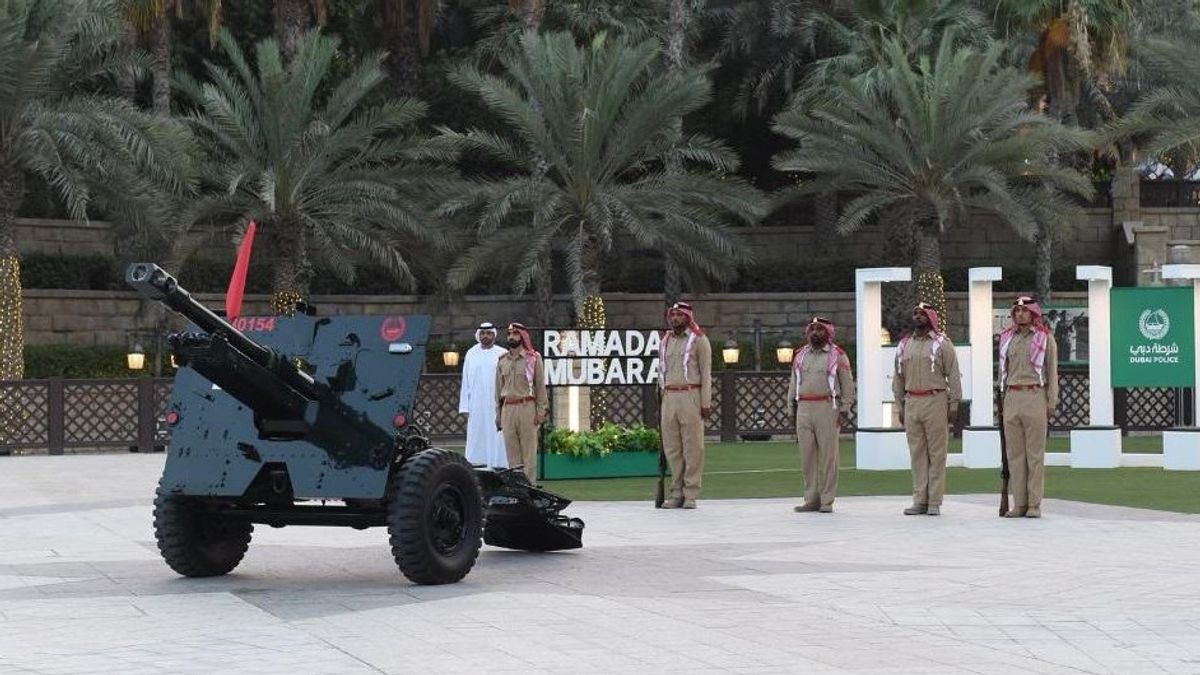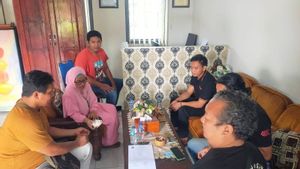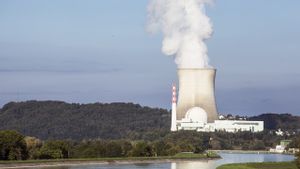JAKARTA - There is something unique about the Ramadan tradition in Dubai, United Arab Emirates (UAE). One of the richest cities in the world has a tradition of marking the arrival of the Holy Month of Ramadan and the time to break the fast by firing a cannon.
Yes, not just any cannon, because the cannon used is the same as the field and historic artillery cannon. Weighing up to two tons per unit. Cannon blast at sunset, familiar to the people of Dubai.
The first time they are fired to mark the start of the holy month, the cannon is then used every day to announce the time for Maghrib prayer which also means breaking the fast.
A total of six cannons are stationed around the emirate during the holy month. These cannons are placed at Burj Khalifa, Atlantis The Palm, Al Salam Mosque in Al Barsha, Al Mamzar Beach, Al Habbai Mosque in Al Khawaneej and prayer room at Al Mankhool.
The National Police follow Dubai Police officers as they transport artillery from Al Wasl Street to the Burj Khalifa.
"We are transporting the cannons with the help of a police patrol car," Major Abdullah Tarish of the General Department of Security and Emergency Protection, told The National News.
"We traveled three hours before breaking the fast at a speed of 70 kilometers per hour. The cannon weighs about two tons, so we have to make sure it reaches the designated place safely," he continued.

Some historians say the custom began in 10th century Egypt, to let people know that it was time to end their fast.
"In Dubai, this tradition has been around since the 1960's. At that time there was no sound system in the mosque to announce iftar. People lead a very simple life. Cannon fire is the main signal for people to end their fast. , "said Major Tarish.
The gun was produced in England in the 1940s and has a sound range of 160 decibels, which can be heard up to 10 km away. Residents were asked to keep a distance of at least 30 meters from the cannon, because of the deafening sound.
According to protocol, four officers operated each cannon. Two of them marched towards the cannons, one stood guard in front of the barrel house and the other loaded it. Two officers remained behind as gun guards and gave orders. When breaking the fast, officers shouted orders and fired cannons.
Two shots are fired to mark the start of Ramadan and once daily to announce iftar. Two explosions mark the start of Eid, marking the end of Ramadan. Two more shots were then fired before the start of the prayers on the day of Eid.
"These cannons are very valuable to us. They are about 80 years old and have been used in previous wars. We are now using them as a sign of peace and tolerance," Major Tarish said.
This year, the public is not allowed to witness the shootings in person, in line with health protocols in the midst of the COVID-19 pandemic. Instead, local television broadcast the shooting live.
"We hope everyone can watch the program and learn about the rich Arab culture and history. We hope the older generation can tell stories about cannon firing from the 1960s to the present generation," said Major Tarish.
The English, Chinese, Japanese, Arabic, and French versions are automatically generated by the AI. So there may still be inaccuracies in translating, please always see Indonesian as our main language. (system supported by DigitalSiber.id)








